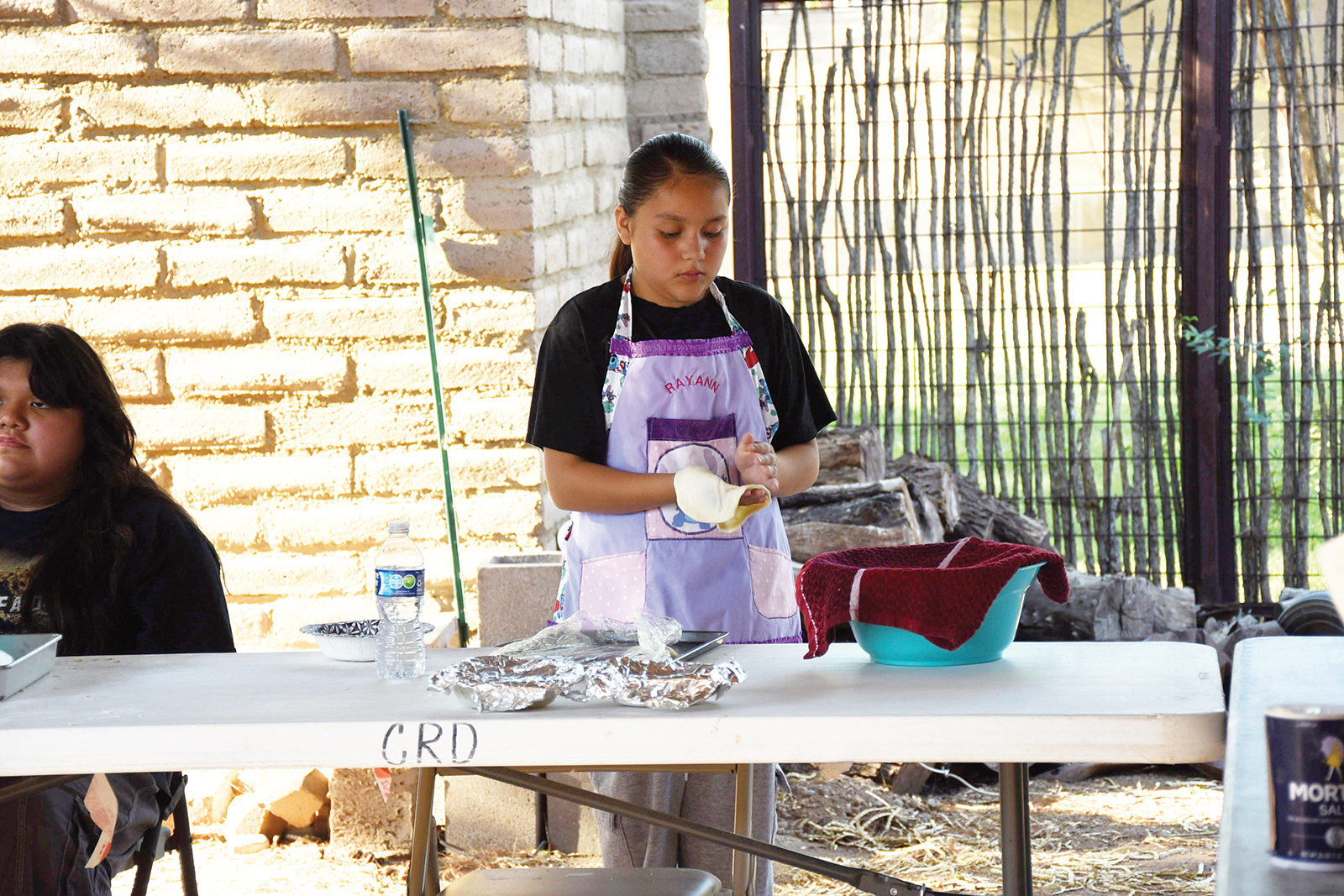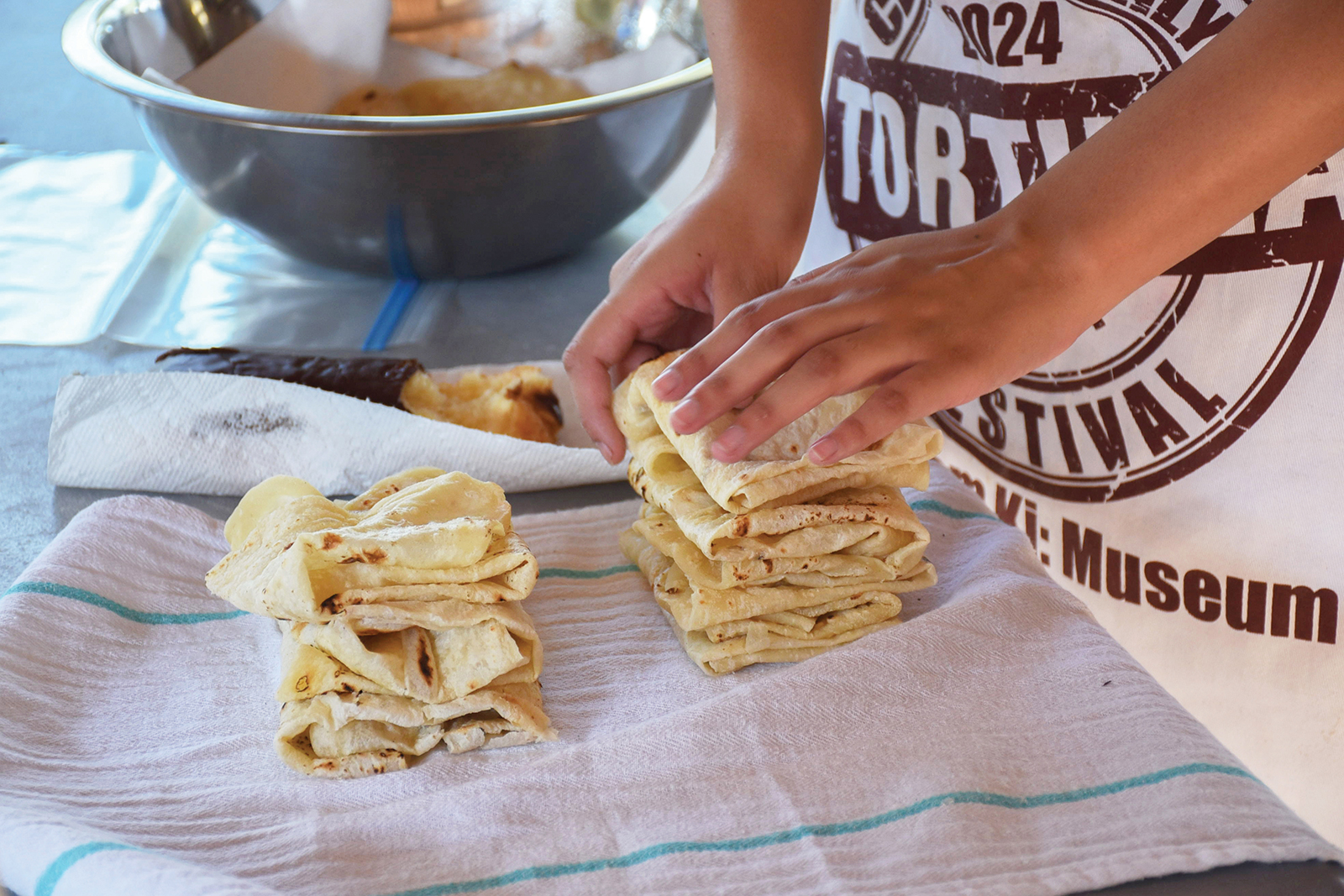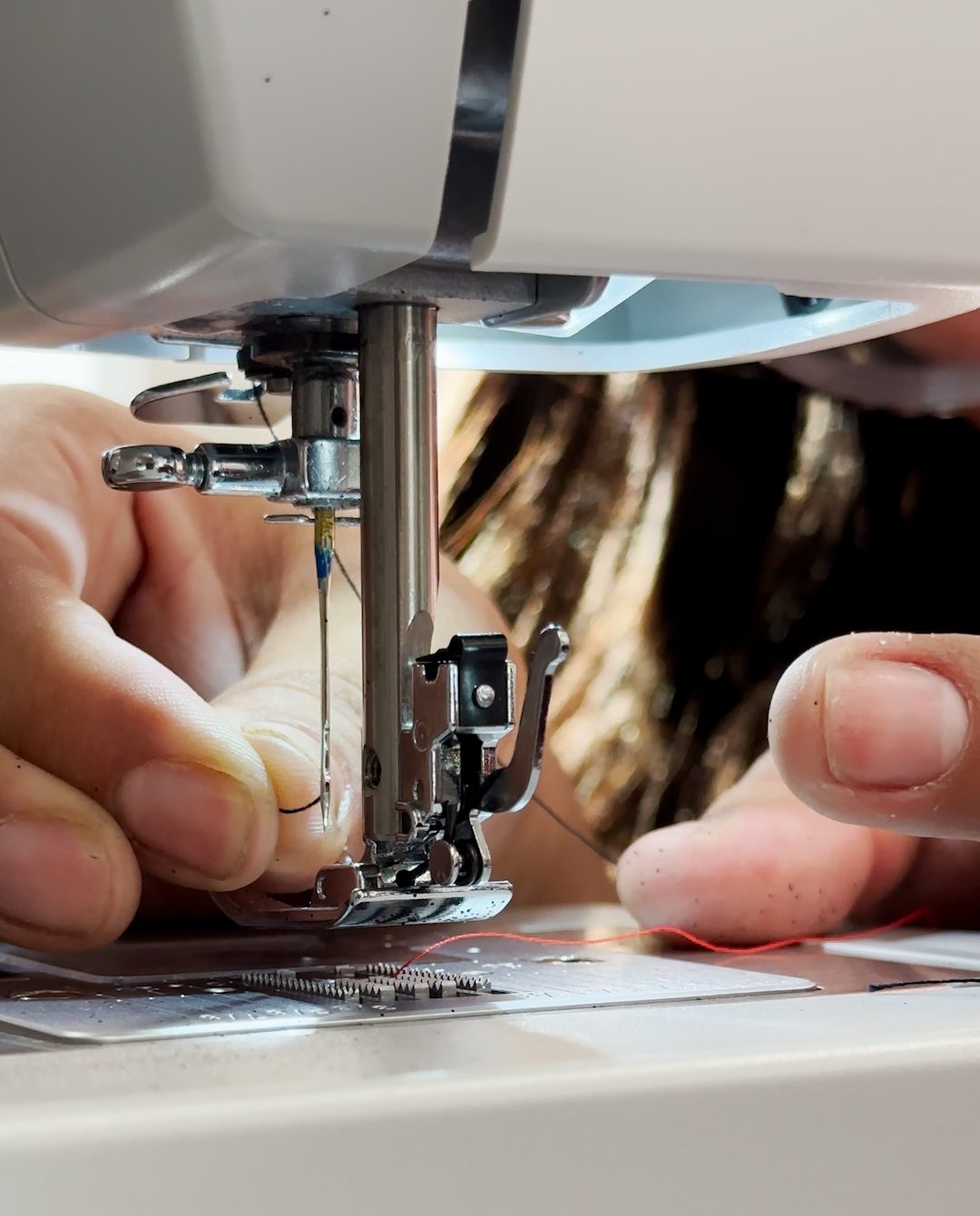VIEWS: 1988
July 31, 2024Continuing Traditions at the Huhugam Ki: Museum
For over 20 years, the Huhugam Ki Museum staff has dedicated one week every summer to teaching young Salt River Pima-Maricopa Indian Community members how to make tortillas (or, in the O’odham language, cemait). During the week of July 15-19, a group of youth spent their early mornings at the museum attending the Kids Tortilla Camp from 6 to 8 a.m. The camp is held on the museum’s patio and is open to boys and girls in the Community who wish to learn how to make tortillas. Museum Specialist Debbie James and Museum Assistant Candice Manuel both demonstrated the process for making cemait. They showed the young students how to prepare the dough mixture that is stretched out and laid flat onto a hot stovetop to cook.
“On the first day [of class], we bring out the flour, the salt, the lard and the water that we use, and we get in front of [the youth] and show them how to mix the dough,” said James. “By the third day, they’ve learned how to do it on their own.”






Throughout the week, the kids are taught the proper ways to mix, knead and stretch the dough and how to cook the tortillas. On the final day, the students are put to the test: They are expected to be able to prepare and cook their own batch of tortillas as their final task.
“The only way to be a great tortilla maker is to continue to do it—even though [your tortillas] may look like Texas or Alaska,” said Huhugam Ki Museum Director Gary Owens jokingly, explaining how cemait isn’t always going to come out perfectly round.
But the challenge is not trying to make them the perfect shape; it lies in the heat from the stove and the possibility of burning your fingers.
“We tell them in the beginning that everyone burns their fingers. Anytime you’re at a stove making tortillas, you’re going to get a burned finger,” said James.
“I did that on the first day. I was talking to somebody, and I was going to pick up the cemait and I touched the stove instead,” James explained. “Now I can’t unlock my phone because my finger is burnt and it won’t take my fingerprint anymore,” she added, laughing.
On the final day, the young tortilla-makers are presented a certificate with the words I’vamik, himk o he nato heg cecmat, which translates to “Let’s go make tortillas.” They also receive a bowl and cheesecloth as a gift to encourage them to continue making tortillas.







